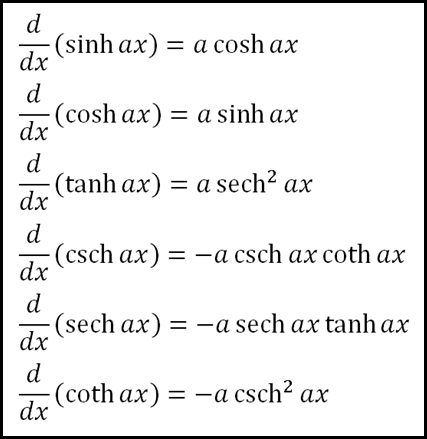
Contents:


Also, it is important to understand that the https://1investing.in/ receivable turnover is calculated by considering only the first and last months. Therefore, it may not give the correct picture if the accounts receivables turnover has drastically varied over the year. To overcome this shortcoming, one can take the average over the whole year, i.e., 12 months instead of 2. The accounts receivable turnover ratio, also known as the debtors turnover ratio, indicates the effectiveness of a company’s credit control system. Nothing motivates people more than money in business, and offering your customers a discount to get cash in the door faster is a common collection strategy across every industry. Manufacturing usually has the lowest AR turnover ratios because of the necessary long payment terms in the contracts.
Asset Turnover Ratio: Definition & Formula.
Posted: Tue, 21 Jun 2022 07:00:00 GMT [source]
It is calculated by subtracting customer returns and refunds from the total credit sales during a measured accounting period. This amount reflects the actual sales made on credit during the period and helps to determine how successful a business was in generating sales. Here we will do the same example of the accounts receivables turnover ratio formula in Excel. You need to provide the two inputs of Net Credit Sales and Average Accounts Receivables. A good accounts receivable turnover depends on how quickly a business recovers its dues or, in simple terms how high or low the turnover ratio is.
Set internal triggers to activate collection escalations sooner rather than later or consider implementing a dunning process, escalating attempts to collect from customers. Maintaining a good ratio track record also makes you and your company more attractive to lenders, so you can raise more capital to expand your business or save for a rainy day. But there are variances in how well companies manage collections from that point forward. You can improve your ratio by being more effective in your billing efforts and improving your cash flow.
Profitability Ratios: What They Are, Common Types, and How ….
Posted: Sat, 01 Apr 2023 07:00:00 GMT [source]
Accounts receivable ratios are indicators of a company’s ability to efficiently collect accounts receivable and the rate at which their customers pay off their debts. Although numbers vary across industries, higher ratios are often preferable as they suggest faster turnover and healthier cash flow. Businesses that get paid faster tend to be in a better financial position.
Late payments could be a sign of trouble, both in terms of management style and financial footing. Accounts receivable is the money owed by the customers to the firm; these remaining amounts are paid without any interest. As per the principle of the time value of money, the firm loses more money if the turnover is low, i.e., a Longer tenor to collect its credit sales. The accounts turnover ratio can also be used as an indication of the quality of receivables and credit sales. If a company is having a higher ratio, it shows that credit sales are more frequently collected vis-a-vis the company with a lower ratio. Hence, we can say it is very important to maintain the quality of receivables.
In turn, it means the company has a better cash position, indicating that it can pay off its bills and other obligations sooner. In addition, the accounts receivable turnover often is posted as collateral for loans, making a good turnover ratio essential. Accounts ReceivableAccounts receivables is the money owed to a business by clients for which the business has given services or delivered a product but has not yet collected payment. They are categorized as current assets on the balance sheet as the payments expected within a year. To calculate net credit sales, simply deduct sales returns and allowances from total credit sales.
The accounts receivable turnover ratio does not take into account the timing of payments. There are several limitations of the AR turnover ratio that must be acknowledged. It is always good practice to use multiple formulas when analyzing a company and to look closer when something unexpected happens in its financial ratios. This section will cover how to calculate accounts receivable turnover ratio with several examples. The accounts receivable turnover ratio relates to a particular timeframe, with inputs taken from a specific period. You can easily calculate the accounts receivables turnover formula in the template provided.
Another example is to compare a single company’s accounts receivable turnover ratio over time. A company may track its accounts receivable turnover ratio every 30 days or at the end of each quarter. In this manner, a company can better understand how its collection plan is faring and whether it is improving in its collections. A low accounts receivable turnover is harmful to a company and can suggest a poor collection process, extending credit terms to bad customers, or extending its credit policy for too long.
Generally, the higher the receivables turnover ratio, the more efficient and effective the firm is at collecting outstanding balances from clients and managing its line of credit process. Additionally, the lower the receivables turnover ratio, the longer a company may be extending credit to its customers without collecting payments and operating with cash flow issues. The accounts receivable turnover ratio is an accounting measure used to quantify a practice’s effectiveness in collecting its receivables or money owed by clients.

Stay on top of your collections by using accounting software that tracks receivables and provides reports on past-due invoices. When buying a new car through the car dealership, the dealership will check the customer’s credit score, among other factors, to ensure they are a good customer that pays off their debts. If the potential customer has a bad credit score, the company might be less likely to loan the money, or they will compensate for the risk with a higher interest rate. Company A has an AR turnover ratio of 14.71, which means they collect their full amount of accounts receivable 14.71 times per year. Keep in mind, you will need to read through the company’s reports to find out what its collection deadline is. If you can’t find “credit sales” on an income statement, you can use “total sales” instead.
What might be a bad AR turnover in some industries might be a great one in another industry. Net credit sales are the amount of revenue generated by goods and services by a business sold to customers on credit terms, excluding cash sales. On the other side, a company with low Accounts turnover ratio shows that the time interval between the receipt of money and credit sales and is high. There is always a risk of liquidity crunch for the working capital requirements.
The accounts receivable turnover ratio calculates how efficiently a company collects customer payments. Generally, a higher turnover is considered positive because the more times a company collects payment from customers, the more often they have revenue collected for business expenses and investments. It is calculated by dividing net credit sales by average accounts receivable. Net credit sales can be found on the income statement, and accounts receivable can be found on the balance sheet.

If it still has cashflow problems, it may need to reduce its payment term. Adding clear payment terms on your invoices, is setting your invoices up for success. Make sure you make it clear that you expect payment within 30 days and don’t be afraid to add in late payment fees. Consider setting credit limits or offering payments plans for high dollar value sales. A high turnover rate means that the company is able to collect quickly, while a low turnover rate means they are slower at their debt collection. The receivables turnover evaluates how successful you are at recovering money owed from customers.
The AR turnover calculation results in the number of times AR was converted to cash during the time period analyzed. Reconciling your accounts receivable frequently is essential to assessing and improving your accounts receivable turnover rate. This process should be done at least once a month, but more often is preferable. Reconciling involves comparing invoices with payments received and making sure they match up. This helps you identify any unpaid invoices that may have gone unnoticed, or discrepancies in payments or amounts due.
When analyzing process costing ratios of several different but similar companies, a company can better understand whether it is an industry-leader or whether it is falling behind. The ratio measures the number of times times that receivables are converted to cash during a certain time period. But this may also make him struggle if his credit policies are too tight during an economic downturn, or if a competitor accepts more insurance providers or offers deep discounts for cash payments. Every company sells a product and/or service, invoices for the same, and collects payment according to the terms set forth in the sale. But first you need to make the right calculations to understand your receivable ratios, including your ARTR and average days-to-pay . Sales revenue is the amount a company earns in sales or services from its primary operations.
Interest Coverage Ratio: Formula, How It Works, and Example.
Posted: Sun, 26 Mar 2017 07:41:07 GMT [source]
You should also investigate the aged accounts receivable report to gain a clear understanding of the status of a company’s collections. For example, a low turnover ratio might not have anything to do with bad debt policies – there might be a problem in the organization’s distribution system. Their goods aren’t getting delivered on time, and therefore customers aren’t paying promptly, either. In both formula options, you will see the net credit sales as a part of the equation. The value of ordinary net sales looks at the gross amount of your sales after returns, allowances, and discounts are subtracted.
As another example, a company that persistently contacts its customers for payment will reduce the amount of receivable turnover, on the assumption that these contacts result in more cash receipts. Further, if invoices to customers contain errors or are sent to the wrong address or person, then payment will be delayed. And finally, if customers within a certain industry are accustomed to delayed payments, this attitude may persist even for those companies attempting to accelerate payment. Suppose that the income statement from a company shows operating revenues of $1 million. The same company has accounts receivables of $80,000 this period and $90,000 the prior period. The average accounts receivables is $85,000 which can be divided into the $1 million for a ratio of 11.76.
Sage 100 Contractor Accounting, project management, estimating, and service management. As a business owner, you probably already know that using the right software can make all the … To understand how a company is managed on a bigger scale, you will need more information than only the turnover value. SIMPL gives you 24/7 access to everything from financial dashboards with real-time information to transactional level details to support documents all in one place. Harold Averkamp has worked as a university accounting instructor, accountant, and consultant for more than 25 years. This team of experts helps Carbon Collective maintain the highest level of accuracy and professionalism possible.
A high receivables turnover ratio can indicate that a company’s collection of accounts receivable is efficient and they have reliable customers who pay their debts quickly. A high receivables turnover ratio might also indicate that a company operates on a cash basis, or has a conservative credit policy. Improving your accounts receivable turnover rate is essential to ensuring the financial health of your business. Taking these steps will help you better manage customer relationships and ensure that you are collecting payments in a timely manner. Providing discounts for early payments is a strategy to encourage customers to pay their bills promptly. Offering a slight discount can be a useful method to prompt customers to pay their invoices earlier, which has the potential to enhance your accounts receivable turnover rate.